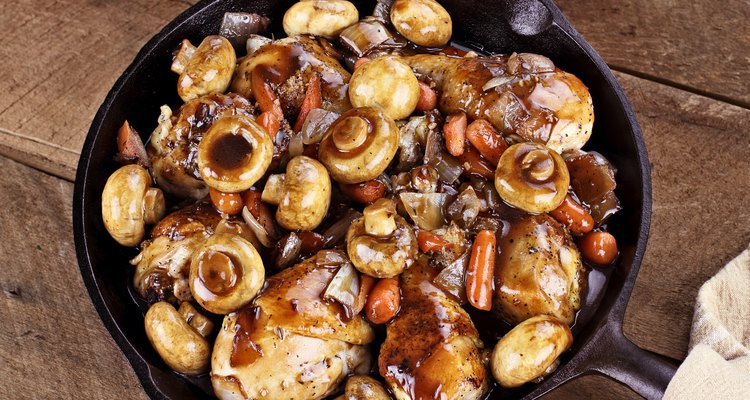
StephanieFrey/iStock/GettyImages
An easy way to prepare chicken for a crowd is to roast or bake a large batch of breasts, legs or other cut-up chicken parts. Recipes using chicken parts are usually simple to double or triple, for an oven-cooked main dish that leaves you free for making other dishes. Minor adjustments in cooking techniques let you save time and work when getting ready for a big family meal or party.
Choosing Chicken Parts
One of the biggest challenges when cooking assorted chicken parts is making sure they all finish cooking at the same time. You can simplify that by selecting a single type, like breasts or leg quarters and buying pieces of similar size. If you want a variety, use a separate pan for each kind of chicken part, with one pan reserved for wings and another for boneless thighs. This way, meatier parts that need more oven time don't force smaller parts to overcook or require you to fish through cooking parts to remove those that are already cooked.
Selecting Equipment
Whether your chicken has a sauce or not, use baking pans with an edge of at least 1 inch and preferably 2 inches when roasting or baking large quantities of chicken or other meats. Rimmed pans hold the heavy runoff of fat or juices that can occur with big-batch cooking. A bulb baster lets you siphon off excess runoff so the chicken does not poach. Choose an instant-read thermometer so you can quickly tell if the chicken is cooked, whether you are preparing a single kind of parts or a variety.
Planning Your Pans
Enhance results by giving chicken parts enough cooking space. Lay the parts out so they do not touch each other. Crowding chicken pieces interferes with browning, increases cooking time and can generate more fat and juice than your pan can hold.
Baking
Doubling or tripling the quantity of chicken in a recipe does not double or triple the cooking time. The cooking time of a large, dense roast can be calculated as how long it takes heat to penetrate the entire piece of meat, usually expressed as minutes per pound. A 3-pound roast might be done in 45 minutes, while a 6-pound roast could require an hour and a half. Math is less exact when you are dealing with a large number of small pieces of chicken. In general, plan an extra quarter of an hour of oven time when doubling a chicken parts recipe. Alternatively, if doubling or tripling a recipe, increase oven temperature by 25 degrees Fahrenheit to keep cooking time close to the original. Your instant-read thermometer, plunged into the thickest part of each kind of chicken part, is your best guide for doneness. Be prepared to watch chicken carefully during the last 15 to 30 minutes of cooking.
Baking in Batches
If you have more chicken than oven space, bake in batches and use brief reheating for the parts that finished cooking first. For a mixture of oven-baked chicken parts, you could bake wings first. Pile them into a single pan, cover with foil and keep warm at the back of or right next to the stove while thighs cook. As soon as thighs finish, move them into a single pan, return the pan of wings in the oven and hold both at 150 F up to 20 minutes before serving. Alternatively, bake all chicken parts in batches 12 to 18 hours ahead of the event, pile in pans, cover with foil and refrigerate. Reheat the pans of chicken at 200 F for 30 to 45 minutes until warm enough for serving.
Adjusting Seasonings
Just as oven time is somewhat flexible when doubling or tripling a recipe, herbs and spices require a little flexibility as well. By and large, leafy seasonings, like basil, dill, oregano, parsley and sage, in either fresh or dried form, double or triple, when a recipe doubles. Garlic, onion and chives can also be doubled without concern. For aromatic ground spices, like allspice and cinnamon, double amounts precisely and do not round up: 3/4 teaspoon, doubled, becomes 1 1/2 teaspoons, not 2 teaspoons. Exercise even greater caution with spices containing any form of pepper. Long-lasting pepper oils can pour out more flavor than wanted in big-batch cooking. Adding a small amount of chili or curry powder to a finished dish is 10 times easier than compensating for an excess. Treat salt with the same respect when doubling a recipe -- try keeping salt at the level of the original recipe, then taste and correct after cooking.
Related Articles
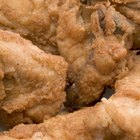
How to Make Crispy Fried Chicken With ...
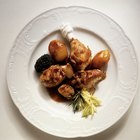
Baking Chicken Dredged in Flour

How to Cook Chicken Parts in the Oven ...
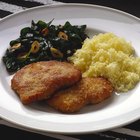
How to Cook a Thin Breaded Chicken ...
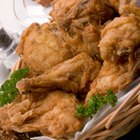
How to Fry Bone in Chicken
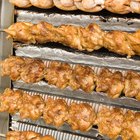
How to Tie a Rotisserie Chicken
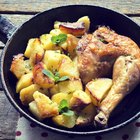
How to Sear and Bake Chicken
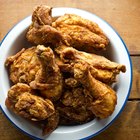
Can You Use a Baking Mix to Make Fried ...
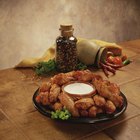
How to Cook Chicken Wings by Boiling ...

How to Grill a Chicken on a Vertical ...
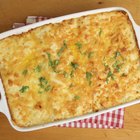
Casserole Dishes That Feed 12 People
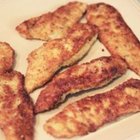
How to Cook Crispy Chicken Strips

How to Make Boneless Chicken Thighs on ...
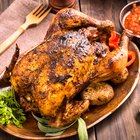
Roast Chicken in Enameled Cast Iron

When Do You Add Potatoes When Baking ...
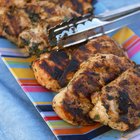
The Differences Between Baking, ...
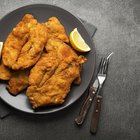
How to Cook Boneless Skinless Chicken ...
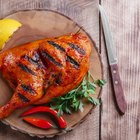
How to Cook Chicken Halves on a Weber ...
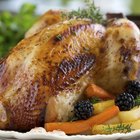
The Best Ways to Make a Baked Moist and ...
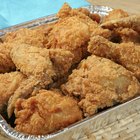
How to Cook Drumsticks With Bread ...
References
- Good Housekeeping: Lemon-Roasted Chicken for a Crowd
- Fine Cooking: Moist Mustard-Rosemary Chicken for a Crowd
- Dallas Morning News: Caterer's Secret for Cheap Way to Feed a Crowd: Chicken Breasts
- Food & Wine: The Secrets to Perfect Roast Chicken
- Bon Appetit: 27 Recipes for Boneless Chicken Breast That Are NOT Boring
- Canadian Living: Scaling Recipes Up or Down
Writer Bio
Janet Beal has written for various websites, covering a variety of topics, including gardening, home, child development and cultural issues. Her work has appeared on early childhood education and consumer education websites. She has a Bachelor of Arts in English from Harvard University and a Master of Science in early childhood education from the College of New Rochelle.